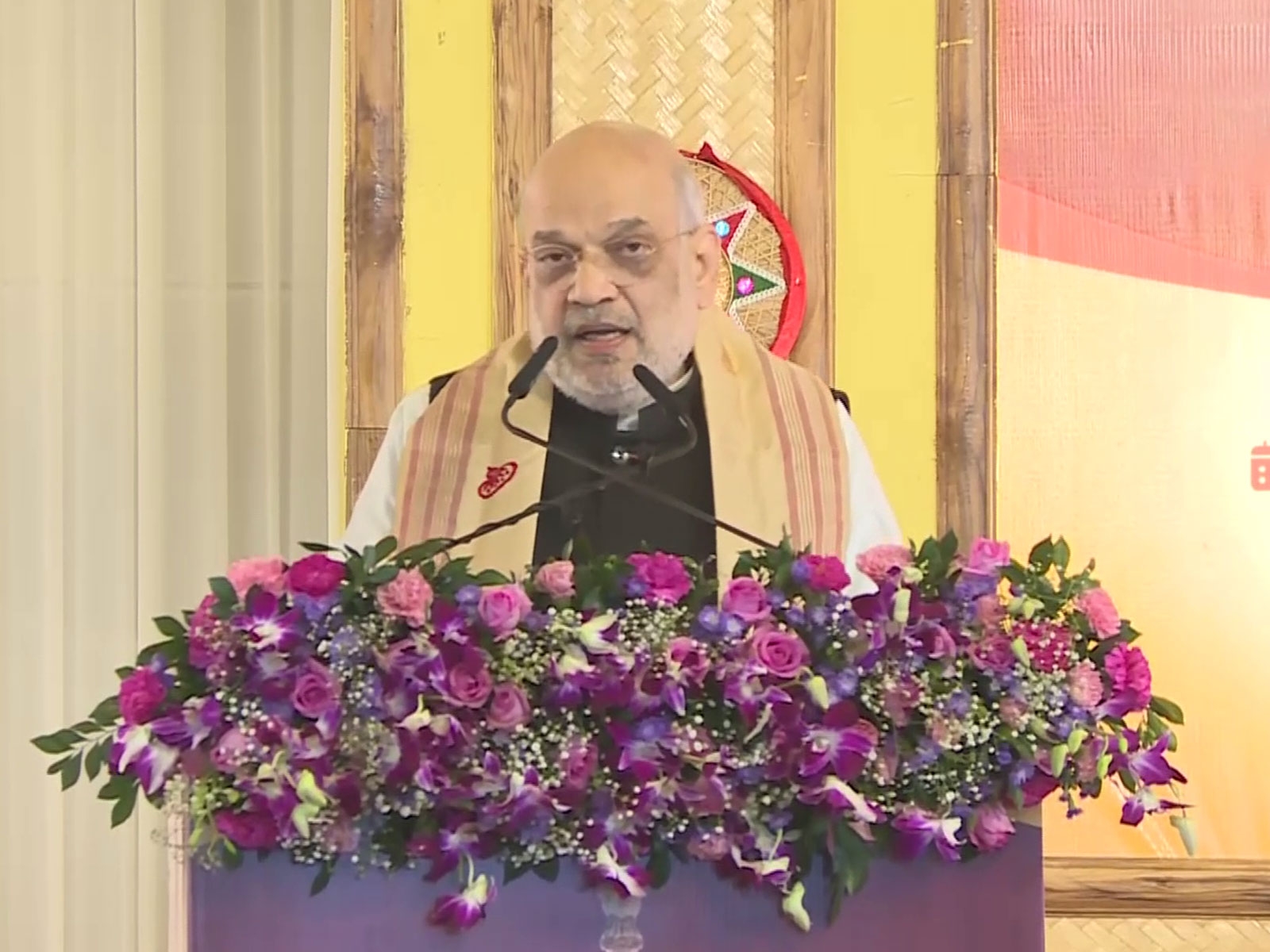In a Goan village, chillies fight back against iron ore mining. But will they survive?

There was a time when the road passing through Caurem would be lined with freshly plucked chillies, laid out on sheets by the side to dry in the sun.
Later, they would be sold in small roadside shops or packed off in tempo vans to the nearest town market in Quepem, South Goa.
And then there was mining.
This road through Caurem also leads to half a dozen iron ore mines. The story of mining in Goa, its rise through the 2000s to peak production in 2008-11, the ban on mining in 2012, and the slow resumption since the ban was lifted in 2014, mirrors the rise, fall and eventual rise of these chillies, which are native to the foothills of Western Ghats.
And now, as mining picks up again, will the Caurem chilly survive?

The story of the Caurem chilly
Caurem is settled in an undulating landscape. There are step fields nearer to the road. Away from the road, the land starts climbing steeply, as thick forests of the Western Ghats take over. The chillies come in two varieties - the milder one grown in fields, while the hotter version is grown in the forests of the ghats.
The hotter variety is called Dongri Mirchi or the chilly of the mountain, and is sown in the monsoons in clearings in the forest.
The field chilly, on the other hand, is a winter crop, sown after the monsoon paddy is harvested. Seeds are first sown in small nurseries by the side of the fields, where they grow into 2-inch saplings. Afterwards, they are transplated to the fields after the paddy stubble has been cleared out. Chilly planted in January is harvested around May.
For the farmers here, who are in the process of clearing the stubble and tending to the nurseries, history is sharply split by the 2006-2008 period, when mining picked up in the area.
Before the mining, they would harvest nearly 200 kilos of chilly from a 150 square metre field. (approximately 0.03 acre. The step fields are small, divided into 50 sq m plots, each farmer cultivating an average three plots). There was a huge surplus left after the farmers stored chillies for their homes, and the rest would be taken to the market at Quepem, where they fetched around Rs 250-300 per kilo.
Change in story
"All this changed in 2008 when mining started. Nearly 1,600 trucks began passing by the road and the ore dust would fly into our fields. By 2009 our chilly production went down to half," says Tulshidas Velip, a farmer and resident of Caurem.
Iron ore mining has taken place in Goa for the better part of the 20th century. But in the late 2000s, driven by a huge demand from China, the low-grade ore found in the forests of Goa became much sought after, and many Portuguese-era mining leases suddenly came alive.
As the Cuarem villagers recount, until 2003 just one mine was active and did not bother the chillies much. By 2007, three mines were active. And by 2009, all five mines in the area were running round-the-clock.
"The trucks would not cover the ore, and would typically be overloaded. The ore particles would settle on the field and mix with the soil when it was tilled," Velip recounts.
The ore made the soil porous and could not hold much moisture. And the chillies required a lot of it. Seeds need to be watered every alternate day for around 25-30 days before the saplings sprout. Once transplanted to the field, the plants need to be watered every two to four days for around four months.
The ore-mixed soil was one end of the problem. On the other was dwindling water. Mining of ore requires digging deep pits where mountains once stood. In the process, many underground water channels were broken, and the water spilled into the mines.
From there it was pumped out and the ore-stained water was dumped in to other water bodies nearby.
So increasing mining implied decreasing water. In Caurem, this became clear when the mine nearest to them started operations.
Water woes
Known as the Xec Salim mine after its lease holder, its proposed area spread over a sacred forest called Devapan Dongor, which had much of Caurem's water sources. Caurem depends solely on these hill streams, and has no wells.
The Xec Salim mine was operating without a clearance from the state pollution control board, and was eventually shut down in 2011 after a High Court case and agitations by many Caurem villagers, including Velip.
The villagers had taken to the streets, to the office of the director of mines, and to the chief minister's bungalow. In April 2011, there was even a lathi charge when they blocked the roads near the village primary school.
The villagers continued to plant the chilly.
"They began digging on our source of water. Two perennial streams permanently dried up. Our yields dropped to 50 kilos from 200. But we never stopped planting. It costs nearly Rs 10,000 to plant the seeds, but we didn't give up," says Chhaya Velip, another farmer who is preparing her fields for the January sowing.
Mining also affected the mountain chilly. As cattle herders stayed off the hills during the mining days, there was no dung to fertilise the land, and as it is, there was less water.
The Xec Salim mine was finally shut down in 2011. One year later, after the Justice MB Shah Commission reported that all mines in Goa were running illegally and beyond prescribed limits, the Supreme Court suspended all mining activities in Goa.

New beginnings?
For the chilly farmers, 2012 brought a fresh beginning. There was no more dust settling on their fields, and with two successive monsoons, the soil regenerated. But the water never returned, and streams continue to flow at low levels.
Though there are no studies to tell how much, the farmers estimate that the water supply is down by at least half.
As a result, chilly production hasn't fully recovered. Each 150 sq m plot now yields around 150 kilos, still three-fourths of the pre-2008 era.
Paddy has followed the same trend, dipping from an average 12 quintals per land holding to four.
Around 1000 square metres of land continues to be affected, including one near the road where an loaded truck overturned, spilling iron ore into the field. The truck owner promised to compensate, but was never seen again.
Deforestation on mining areas nearby has brought in bisons, who eat up chilly plants in the forests and on fields bordering the forests.
"Agriculture has not fully revived even after the mining ban. From around 8,000 square metres under cultivation, we're down to 5,000 sq m. Water sources have not recovered, and farmers are diverting all the water from these to the streams, leaving nothing to flow into the nalas leading to the river," said Nilesh Gaonkar, a Caurem resident who was among those arrested in the 2011 agitations.
Gaonkar now works closely with Ravindra Velip, another Caurem resident who is now the Aam Aadmi Party candidate for the constituency, Sanguem.
Velip, Gaonkar and others from Caurem have proposed to bring all mining operations under a village cooperative society, to directly determine the trade-offs between mining and concerns of the farmers. The government has not registered the society, and in an agitation Velip was arrested, and in jail, assaulted by men whose identities remain unknown.
Now, as the dust, as it were, barely settles on mining, there has neither been a survey of the effects of agriculture, nor rehabilitation of the farmers.
Meanwhile, one out of five mines has begun operating. Each day, 100 trucks cross the road by the fields, and the farmers are already complaining about dust. The trucks aren't overloaded, the ore is covered by a tarpaulin, but continues to spill from gaps in the truck.
"Saplings this year are stunted. This hadn't happened in the last three years, I don't know why it is happening now," says Chandrakant Dharmivale, who shows that around half the saplings in the nurseries are smaller than the others. Their leaves appear darker.
"I'm concerned that if two or three more mines open in the area, the effects will worsen."
As mining picks up, Caurem, and it's chillies, can only wonder.
Edited by Jhinuk Sen
First published: 15 January 2017, 9:59 IST





![BJP's Kapil Mishra recreates Shankar Mahadevan’s ‘Breathless’ song to highlight Delhi pollution [WATCH] BJP's Kapil Mishra recreates Shankar Mahadevan’s ‘Breathless’ song to highlight Delhi pollution [WATCH]](https://images.catchnews.com/upload/2022/11/03/kapil-mishra_240884_300x172.png)

![Anupam Kher shares pictures of his toned body on 67th birthday [MUST SEE] Anupam Kher shares pictures of his toned body on 67th birthday [MUST SEE]](https://images.catchnews.com/upload/2022/03/07/Anupam_kher_231145_300x172.jpg)






